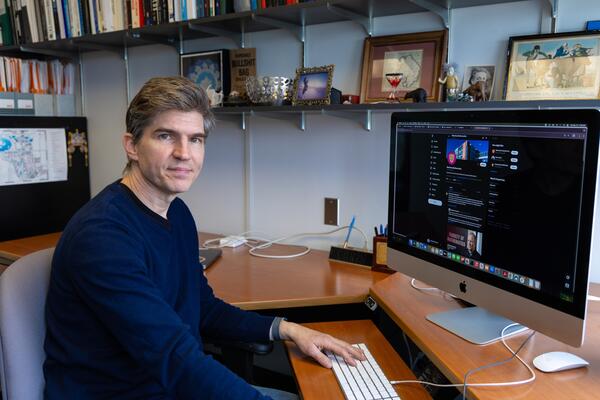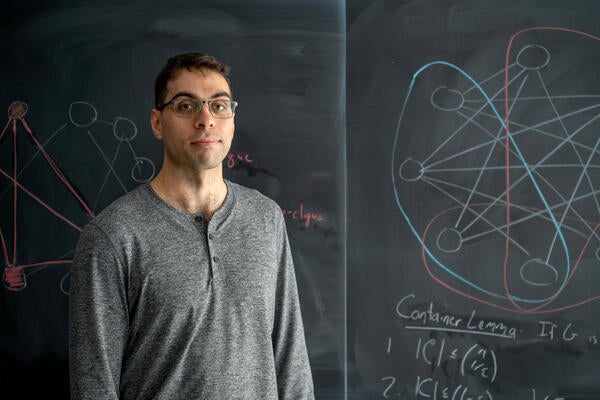
Does the echo chamber influence strategic voting and electoral outcomes?
New research links an individual's voting decision to their social circle.

New research links an individual's voting decision to their social circle.
By Joe Petrik David R. Cheriton School of Computer ScienceWhen an election is held we often employ a peculiar kind of logic. As we mull over the candidates we may have a top choice, but if we think our preferred candidate isn’t going to win, we might vote for our second choice. Or maybe we cast a ballot for our second choice because we want to make sure that a frontrunner who doesn’t represent our view loses.
 This is an example of strategic voting and the phenomenon explored through mathematical analysis and simulation by David R. Cheriton School of Computer Science Professor Kate Larson and her recently graduated PhD student, Alan Tsang.
This is an example of strategic voting and the phenomenon explored through mathematical analysis and simulation by David R. Cheriton School of Computer Science Professor Kate Larson and her recently graduated PhD student, Alan Tsang.
“We were interested in the effects of information in the context of strategic voting,” said Larson. “We explored this using a simple voting model — plurality voting that Canadians are familiar with. It’s the system where you cast a vote for a candidate and the winner of the election is the person who receives the most votes.”
The interesting twist is that Larson and Tsang developed a mathematical model that investigated the effects of limited information, in particular when voters get information from individuals in their social networks but not from the entire population. They then changed various properties of the network, including how closely connected people are and how information flows among them, to explore their outcomes.
It is perhaps not surprising that the more closely we associate with friends and colleagues who share a similar ideology, the more likely our view of the world is reinforced. This well-known property of social networks is called homophily — often called the echo chamber effect — and it is perhaps what’s behind the adage that birds of a feather flock together.
Larson and Tsang found through mathematical simulation that the more homophily in a social network — one in which people are more likely to be friends if they share preferences or if people are friends they are more likely to have common preferences — the lower the extent and benefit of strategic voting.
“We found this interesting disconnect,” she explained. “If the network had a high degree of homophily, we saw less strategization occurring and consequently ended up with worse outcomes for the entire population in the model. And if the network had less homophily, we saw more strategization but ended up with better outcomes.”
Their mathematical model assumed that a person would vote, then get information on how friends in their network had voted. Then, given that information, a person could change his or her mind on who to vote for.
“If I like candidate A best, but my friends are voting for candidate B, I change my mind and vote for candidate B,” said Larson. “I haven’t changed preferences. If I like candidate A best, I still do, but I now do not vote for this candidate given the information I have from friends in my network.”
This may seem an unusual way to picture real elections, but Larson and Tsang had good reason for their mathematical model to incorporate such iteration as a feature. “We envisioned this scenario as voters seeing the results of preliminary polls leading up to the main election, then that polling information changing how they will vote.”
When we think about social networks, we usually have close friends and colleagues in mind, but individuals also can be connected to news sources, Larson explained, adding that all sources of information and opinion could be treated as nodes in the network. “Our model considered news sources as just another connection, so in a highly homophilic network you would be more closely connected to various news sources, which are similarly aligned by worldview or preference.”
Their model may provide insight into why in real-world elections we see less strategic voting if a homophily of opinion is present. When voters are surrounded by friends, colleagues and news sources with similar views, it creates an echo chamber where they see their position as being more widely supported than it actually is. This may cause them to become further entrenched in their position and need a greater amount of conflicting evidence to change their minds.
“The echo chamber causes voters to have a harder time discerning if their position is in the minority and may prevent them from voting for a more strategic choice,” said Larson. “When surrounded by others with similar opinions, voters may not see an opportunity or even a need to strategize, which can lead to worse electoral outcomes for the entire population.”

Read more
Here are the people and events behind some of this year’s most compelling Waterloo stories

Dr. Chris Bauch, a professor of Applied Mathematics at the University of Waterloo, is part of a team that has developed a new approach to help public health officials predict where outbreaks might occur. (Elisabetta Paiano/University of Waterloo)
Read more
New research demonstrates that vaccine skepticism on social media can predict public health crises

Read more
Waterloo researcher Cameron Seth is breaking down the world’s hardest computer science problem piece by piece
The University of Waterloo acknowledges that much of our work takes place on the traditional territory of the Neutral, Anishinaabeg, and Haudenosaunee peoples. Our main campus is situated on the Haldimand Tract, the land granted to the Six Nations that includes six miles on each side of the Grand River. Our active work toward reconciliation takes place across our campuses through research, learning, teaching, and community building, and is co-ordinated within the Office of Indigenous Relations.